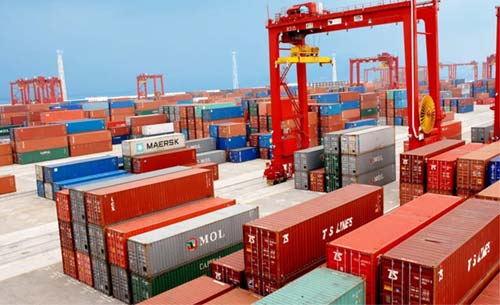Ports around the world operate 365 days a year and are open 24 hours a day. With rapid vessel turnaround times, containers have to be loaded as efficiently as possible, in order to minimize downtime. One way to establish clear deadlines is by setting cut-offs.
There are many types of cut-offs in the world of sea freight. Cut-offs exist for shipping instructions, bill of lading submissions, manifest submissions and more. One important cut-off is the Container Yard (CY) cut-off, also known as CY closing.
A CY cut-off is imposed by the carriers to shippers as a deadline to gate-in their laden containers before a specific time and date. The exact cut-off time and date are formalized upon the issuance of the container’s release order and is typically 24 – 48 hours before the estimated time of departure (ETD) of the vessel.
In this article, we’ll be exploring the concept of CY closing in more detail and also why container yard cut-offs are necessary for carriers to maintain an accurate sailing schedule. Let’s dive right in!
What’s the Difference Between CY Opening and CY Cut-Off / Closing?
In order to understand the concept of CY closing, it’s important to understand its relation to CY opening. To put things into perspective, carriers start receiving containers at the port once they open the container yard. This event is also referred to as a CY opening.
The CY opening is finalized when the vessel arrives at the port for loading and is typically 5 – 7 days before the estimated departure date. The CY opening can also be shorter, if a vessel arrives late.
On the other hand, a CY closing is typically 24 – 48 hours before the vessel’s intended departure and can depend on port congestion, location, carrier instructions or vessel space. If there is a vessel arrival delay, the CY cut-off time can be extended to accommodate more shipping containers on the nominated vessel.
What Is a Container Yard (CY)?

A container yard is a facility inside a port, where containers are received and loaded onto the vessel from. Once the trucker delivers the laden containers to the port, they are staged until they are loaded onto the intended vessel for departure.
Why Do Container Yards Have Cut-Offs?
Having a container yard cut-offs allows port operators to create accurate vessel stowage plans, in order to avoid unnecessary re-planning of containers. Inefficient stowage planning could lead to delays and multiple revisions, also known as double handling, which hampers port productivity and increases lead time.
There are cases where multiple carriers co-load on a departing vessel. These stowage plans consist of hundreds, sometimes thousands of containers, and if container yards don’t have cut-offs, port operators would have to constantly re-plan when new containers arrive.
Example of a CY Cut-Off Scenario:
Once the sailing schedule has been published and the exporter has decided on a sailing, the carrier releases a shipping order (SO) and a booking confirmation. Both sailing schedule and booking confirmation will indicate the CY cut-off date and time.
This information is important for exporters, as they need to coordinate with their trucker for empty container pickup, cargo readiness, and delivery of the laden container to port (also called container gate-in).
Here is an example of a booking confirmation from the carrier indicating the CY cut-off/closing time:
| Carrier | Global Forwarding Co. |
| Booking Number | 11362356B |
| Port of Loading | Houston, United States |
| CY Cut-Off | 21/10/2021 at 8pm |
| SI Cut-Off | 20/10/2021 at 4pm |
| ETD | 21/10/2021 |
| Port of Discharge | Hamburg, Germany |
| ETA | 18/11/2021 |
| Service Type | Port/Port |
| Container Type | 1 x 40 GP |
What’s the Difference between CY Cut-Off and Loading Cut-off Time (LCT)?
In most countries the terms CY cut-off or CY closing is used to indicate the deadline when a laden container has to be gated into port, in order to be loaded onto the intended vessel.
However, in some countries, the term Loading Cut-off Time (LCT) is used instead of CY closing or CY cut-off. This is to avoid confusion as a container yard could also be the empty container depot from the carrier, where empty containers are collected from.

Get Free Course Access
If you enjoyed the article, don’t miss out on our free supply chain courses that help you stay ahead in your industry.

Gerrit Poel
Co-Founder & Writer
at freightcourse
About the Author
Gerrit is a certified international supply chain management professional with 16 years of industry experience, having worked for one of the largest global freight forwarders.
As the co-founder of freightcourse, he’s committed to his passion for serving as a source of education and information on various supply chain topics.
Follow us